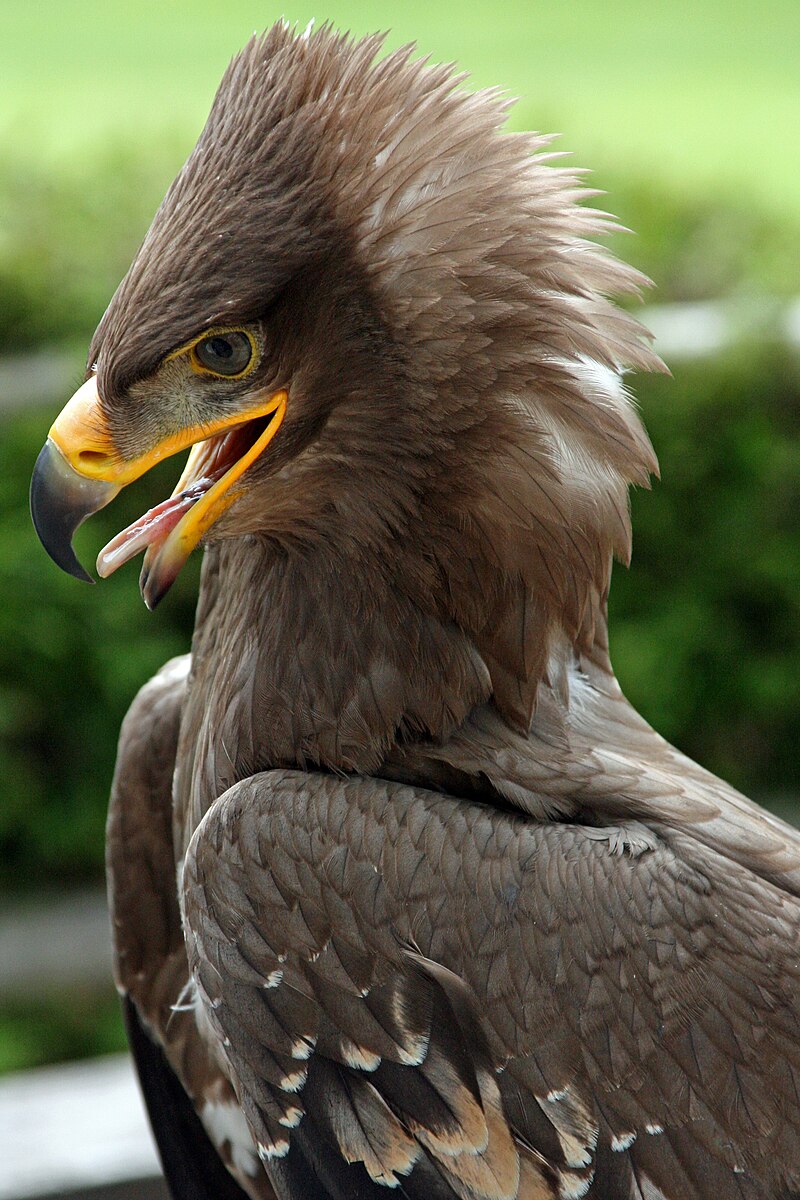Steppe eagles (Aquila nipalensis) are carnivorous birds of prey that consume a wide variety of prey, including mammals, birds, reptiles, and insects. They primarily feed on small-sized mammals such as voles and ground squirrels. During the breeding season, they may specialize in hunting particular mammals, while during non-breeding times, they feed on various foods and can be peculiarly narrow in dietary choices.
The Daily Consumption of Steppe Eagles
Researchers have found that steppe eagles, like other eagles, consume about 0.5 to 1 pound of food every day. However, the frequency of consumption varies, with eagles eating more frequently during periods of food abundance and storing about 2 pounds of food in their crops.
Termites: A Significant Part of the Diet
Insects, such as termites and locusts, are frequently consumed by steppe eagles, especially during winter. In southern Africa, steppe eagles have been estimated to eat approximately 1600-2200 termites a day, which can be attainable in about 3 hours of feeding. The stomachs of two dissected steppe eagles contained 630 and 930 termite heads, respectively.
Opportunistic Feeding Habits
Steppe eagles are opportunistic predators and have been known to consume large fowl like chickens and domestic turkeys, as well as pilfering easy prey. They have also been observed feeding on termites, particularly during rain fronts when termites emerge in large quantities.
Dietary Variations During Breeding and Non-Breeding Seasons
 Image source: Steppe Eagle by Fimb
Image source: Steppe Eagle by Fimb
During the breeding season, steppe eagles may specialize in hunting particular mammals, while during non-breeding times, they feed on various foods and can be peculiarly narrow in dietary choices.
Breeding Season Diet
During the breeding season, steppe eagles may focus on hunting specific small mammals, such as voles and ground squirrels, to provide for their young.
Non-Breeding Season Diet
During non-breeding times, steppe eagles have a more varied diet, feeding on a range of prey including mammals, birds, reptiles, and insects. They may also be more opportunistic in their feeding habits, taking advantage of easy prey such as domestic fowl.
Factors Affecting Steppe Eagle Feeding Habits
Several factors can influence the feeding habits of steppe eagles, including:
-
Prey Availability: The abundance and availability of their preferred prey, such as small mammals and insects, can affect the eagles’ dietary choices.
-
Seasonal Changes: Steppe eagles may adjust their feeding habits based on seasonal changes in prey availability and their own breeding and nesting requirements.
-
Opportunistic Behavior: Steppe eagles are known to be opportunistic predators, taking advantage of easy prey when available, such as domestic fowl or pilfered food.
-
Environmental Conditions: Factors like weather patterns, such as rain fronts that trigger termite emergence, can influence the eagles’ feeding behavior and prey selection.
Conclusion
Steppe eagles are versatile predators that consume a wide range of prey, with their daily food intake ranging from 0.5 to 1 pound. Their diet is heavily influenced by factors such as prey availability, seasonal changes, and opportunistic behavior. Understanding the feeding habits of steppe eagles is crucial for their conservation and management, as it provides insights into their ecological role and the potential impacts of environmental changes on their populations.
References:
– https://animaldiversity.org/accounts/Aquila_pomarina/
– https://en.wikipedia.org/wiki/Steppe_eagle
– https://peregrinefund.org/explore-raptors-species/eagles/steppe-eagle
– https://www.bioexplorer.net/what-do-eagles-eat.html/
– https://animalia.bio/steppe-eagle?custom_list=941

